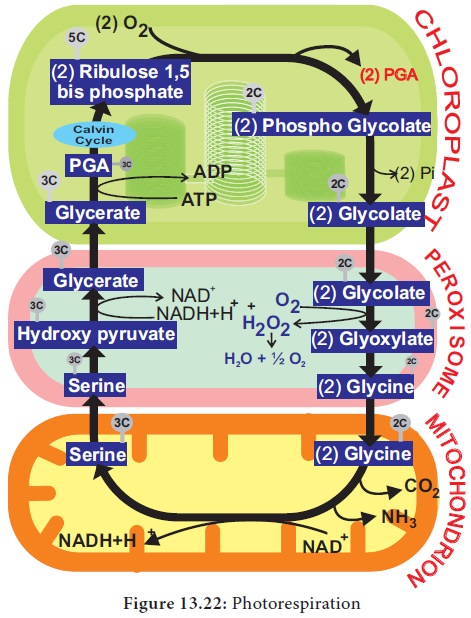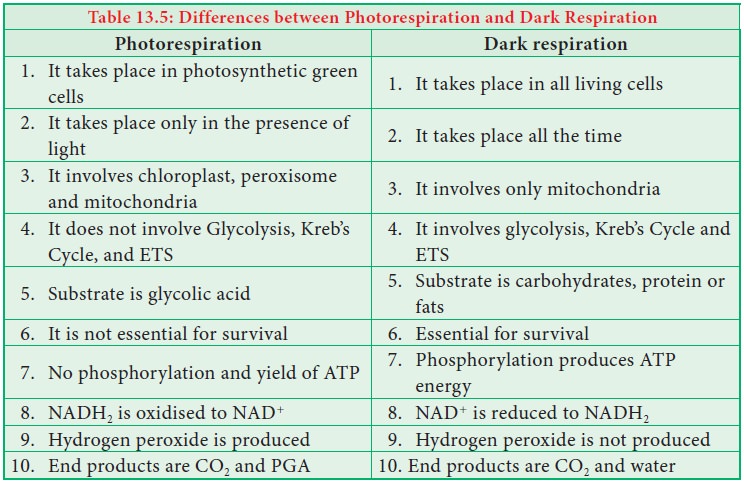Chapter: 11th Botany : Chapter 13 : Photosynthesis
Photorespiration or C2 Cycle or Photosynthetic Carbon Oxidation (PCO) Cycle
Photorespiration or C2 Cycle or
Photosynthetic Carbon Oxidation (PCO) Cycle
Respiration
is a continuous process for all living organisms including plants. Decker
(1959) observed that rate of respiration is more in light than in dark.
Photorespiration is the excess respiration taking place in photosynthetic cells
due to absence of CO2 and increase of O2(Table 13.5).
This

C2 Cycle
takes place in chloroplast, peroxisome and mitochondria.  RUBP is converted
into PGA and a 2C-compound phosphoglycolate by Rubisco enzyme in chloroplast.
Since the first product is a 2C-compound, this cycle is known as C2 Cycle. Phosphoglycolate by loss of phosphate becomes glycolate.
Glycolate formed in chloroplast enters into peroxisome to form glyoxylate and
hydrogen peroxide. Glyoxylate is converted into glycine and transferred into
mitochondria. In mitochondria, two molecules of glycine combine to form serine.
Serine enters into peroxisome to form hydroxy pyruvate. Hydroxy pyruvate with
help of NADH + H+ becomes glyceric acid. Glyceric acid is cycled
back to chloroplast utilising ATP and becomes Phosphoglyceric acid (PGA) and
enters into the Calvin cycle (PCR cycle). Photorespiration does not yield any
free energy in the form of ATP. Under certain conditions 50% of the photosynthetic potential is lost because of Photorespiration (Figure 13.22).
1. Significance of photorespiration
1. Glycine
and Serine synthesised during this process are precursors of many biomolecules
like chlorophyll, proteins, nucleotides.
2. It
consumes excess NADH + H+ generated.
3. Glycolate
protects cells from Photo oxidation.
2. Carbon Dioxide Compensation Point
When the
rate of photosynthesis equals the rate of respiration, there is no exchange of
oxygen and carbon dioxide and this is called as carbon dioxide compensation point. This will happen at particular light intensity when exchange of gases becomes zero. When light is not a
limiting factor and atmospheric CO2 concentration is between 50 to
100 ppm the net exchange is zero.
Table 13.5: Differences between Photorespiration and Dark Respiration

Related Topics